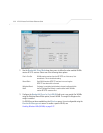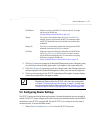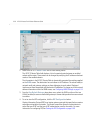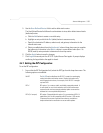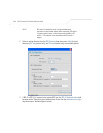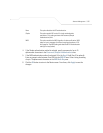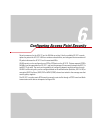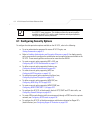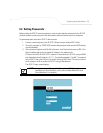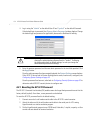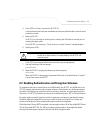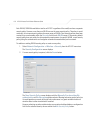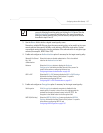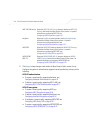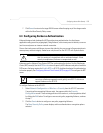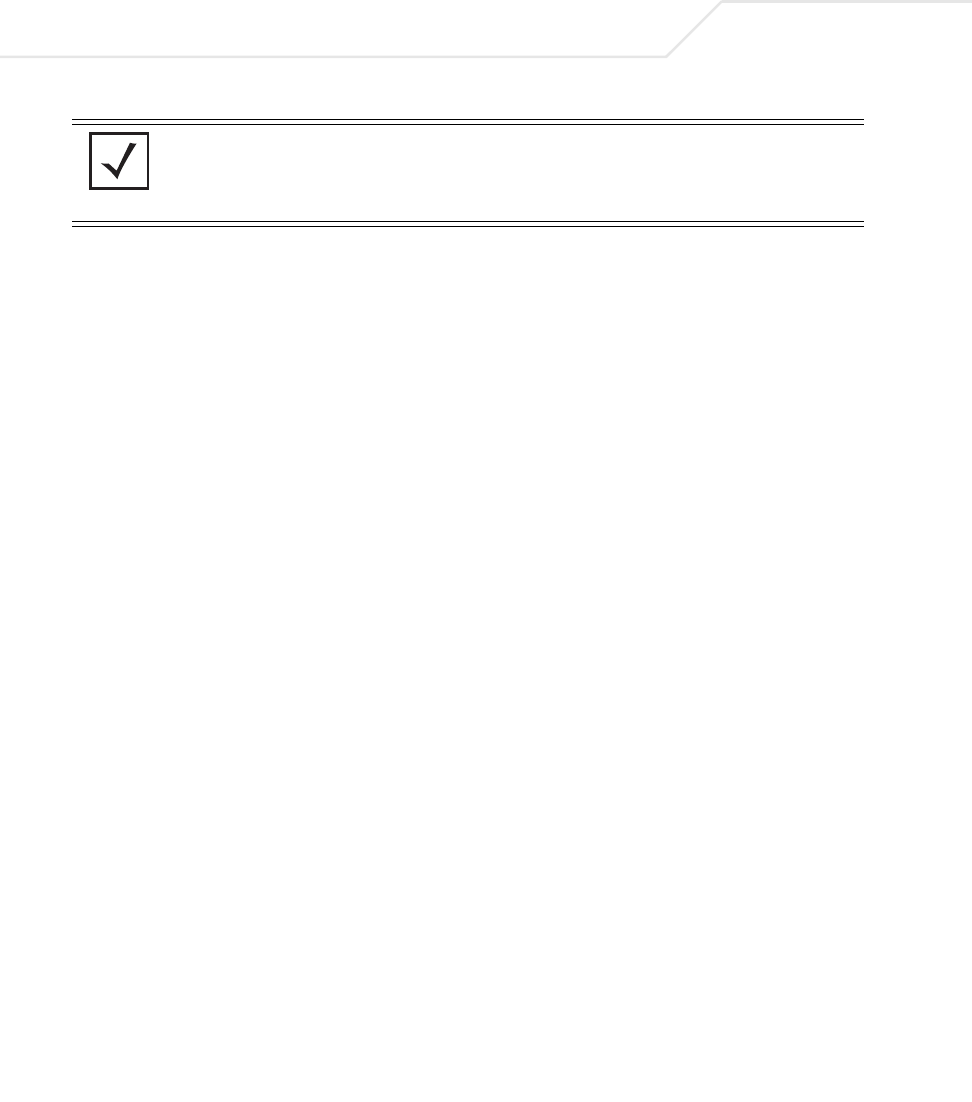
AP-5131 Access Point Product Reference Guide
6-2
6.1 Configuring Security Options
To configure the data protection options available on the AP-5131, refer to the following:
• To set an administrative password for secure AP-5131 logins, see
Setting Passwords on page 6-3.
•Refer to Enabling Authentication and Encryption Schemes on page 6-5 to display security
policy screens used to configure the authetication and encryption schemes available to the
AP-5131. These security policies can be used on more than one WLAN.
• To create a security policy supporting 802.1x EAP, see
Configuring 802.1x EAP Authentication on page 6-11.
• To define a security policy supporting Kerberos, see,
Configuring Kerberos Authentication on page 6-9.
• To create a security policy supporting WEP, see
Configuring WEP Encryption on page 6-16.
• To configure a security policy supporting KeyGuard, see,
Configuring KeyGuard Encryption on page 6-18.
• To define a security policy supporting WPA-TKIP, see
Configuring WPA Using TKIP on page 6-20.
• To create a security policy supporting WPA2-CCMP, see
Configuring WPA2-CCMP (802.11i) on page 6-22.
• To configure the AP-5131 to block specific kinds of HTTP, SMTP and FTP data traffic, see
Configuring Firewall Settings on page 6-25.
• To create VPN tunnels allowing traffic to route securely through a IPSEC tunnel to a private
network, see Configuring VPN Tunnels on page 6-34.
• To configure the AP-5131 to block transmissions with devices detected as Rogue AP’s
(hostile devices), see Configuring Rogue AP Detection on page 6-53.
NOTE Security for the AP-5131 can be configured in various locations throughout
the AP-5131 menu structure. This chapter outlines the security options
available to the AP-5131, and the menu locations and steps required to
configure specific security measures.



